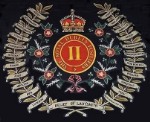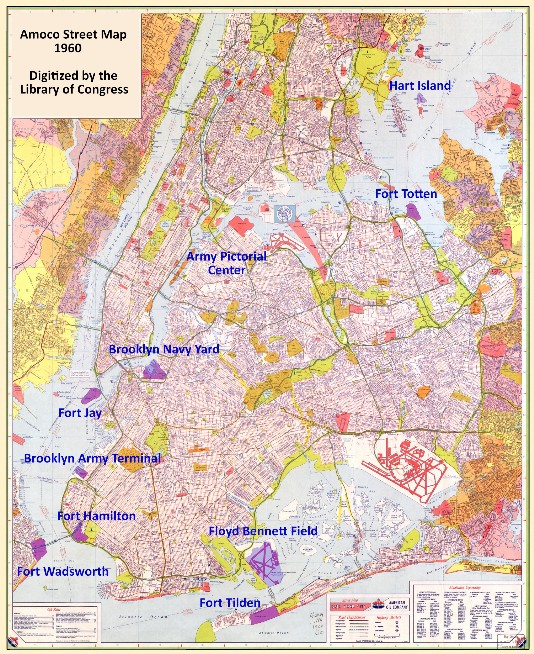Armed Forces in New York City
From the War of Independence through the Cold War, the US armed forces maintained a large presence in New York City. Unlike the British Army in Dublin, there were few combat troops in the city and most were artillerymen who protected the metropolis from sea, and later, air attack. Additionally, New Yorkers connected to the armed forces were overwhelmingly civilians employed at the Brooklyn Navy Yard, the Brooklyn Army Terminal, and the Military Ocean Terminal Bayonne. The British armed forces had hardly any civilian employees in Dublin as the city had no arsenal, naval dockyard, or uniform factory.
Note that in 1904 Dublin, there were 4,550 British Army combat troops (1 cavalry regiment and 5 infantry battalions). Those soldiers accounted for 1,213 persons per 100,000 people living in the City of Dublin (290,638) and its Southern Suburbs (84,497). In 1901 New York, combat troops (1 infantry battalion and 35 harbor defense artillery companies) represented only 116 per 100,000 population.
Armed Forces Facilities
As late as 1960, the Army and Navy had multiple establishments in America's largest city, but they stationed few uniformed personnel there. The armed forces did; however, employ over 20,000 civilian New Yorkers. On the map below, Defense Department facilities are shaded purple and labeled in navy blue.
Click on the map for a high-resolution pdf from this website. The file is 35.7 MB and will take a long time to open.
On the left edge of the above image, across the harbor from Fort Jay and the Brooklyn Army Terminal, appear parts of Military Ocean Terminal Bayonne (MOTBY). That facility was purchased by the US Navy in 1941 and transferred to the US Army in 1967. The armed forces used it for ship repair and the movement of heavy equipment (artillery, armored vehicles, engineering vehicles) to and from Europe. In 1967, MOTBY assumed the responsibilities of the Brooklyn Army Terminal and its civilian employment increased to 3,000. Military use of the facility ended in 1999.
Military Ocean Terminal Bayonne
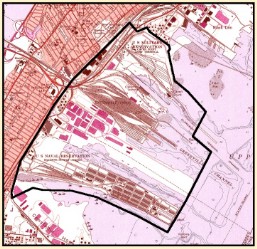
National Geodetic Survey.
* Has extant nineteenth-century structures of historic importance. All except those in Fort Hamilton are now in parks.
* Governors Island / Fort Jay, 1794-1996
Governors Island was fortified to defend Manhattan and the harbor entrance to the Hudson and East Rivers. After the Civil War, the War Department removed the artillery from the island and Fort Jay became an infantry post. Until the end of the Second World War, the Army usually maintained an infantry battalion on Governors Island. Headquarters of the First Army was located there 1933-1943 and 1946-1966. In 1966, the island became a Coast Guard Station and was home to 2,200 uniformed personnel and their 2,800 dependents. It was also the place of employment for 1,000 civilians. At the time, Governors Island was the Coast Guard's largest facility.
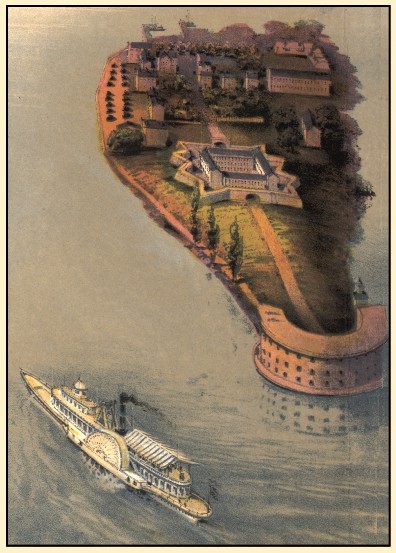
From J. Bachmann's Panorama of New York, 1874 - Library of Congress.
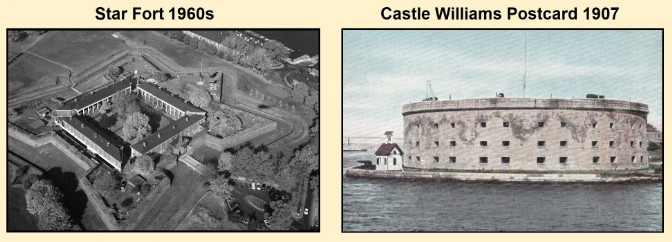
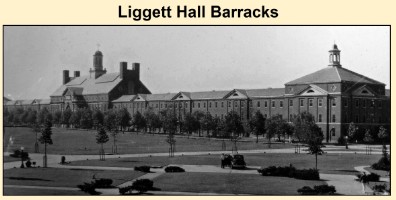
Photograph 1930s digitized by the National Park Service.
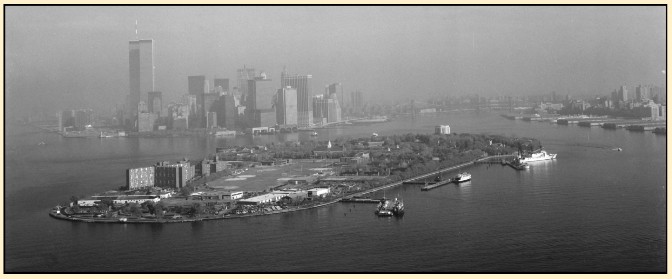
Photograph 1970s digitized by the Library of Congress.
New York (Brooklyn) Navy Yard, 1801-1996
When first established, this facility was the largest naval yard in the United States. Throughout its nearly 200-year history, the yard repaired, modified, and built naval vessels. During its last few years of operation, it employed 9,000 to 10,000 civilians.

Lithograph 1857 digitized by the New York Public Library.
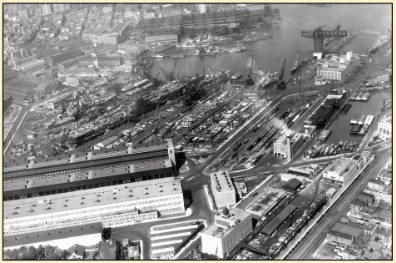
Photograph 1945, US Navy.
* Fort Hamilton, 1831
This fort is one of the three oldest military posts in the country and was built to guard the entrance to New York's Inner Harbor. After the First World War, the War Department placed the firing batteries into "cartaker" status. Prior to the outbreak of the Second World War, Fort Hamilton was armed with 14 heavy guns, 4 medium guns, and two light guns.
Since the end of the Second World War, Fort Hamilton was home to multiple Army support organizations. It currently hosts Army Reserve and National Guard units, a Military Entrance Processing Station, HQ of the NYC Recruiting Battalion, and HQ North Atlantic Division - Corps of Engineers. The fort now has 575 uniformed personnel with 940 dependents and 700 civilian employees. It is the only active duty, armed forces facility in the New York Metropolitan Area.
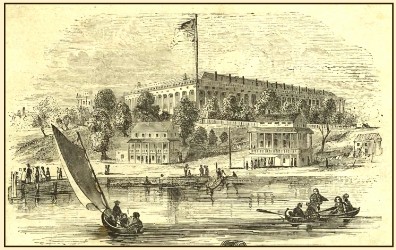
Lithograph 1853 digitized by the New York Public Library.

Photograph 1899 digitized by the New York Public Library.
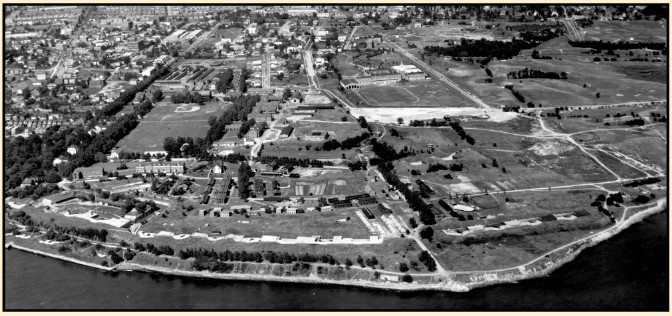
Photograph 1924 digitized by the National Archives.
Site Plan 1935
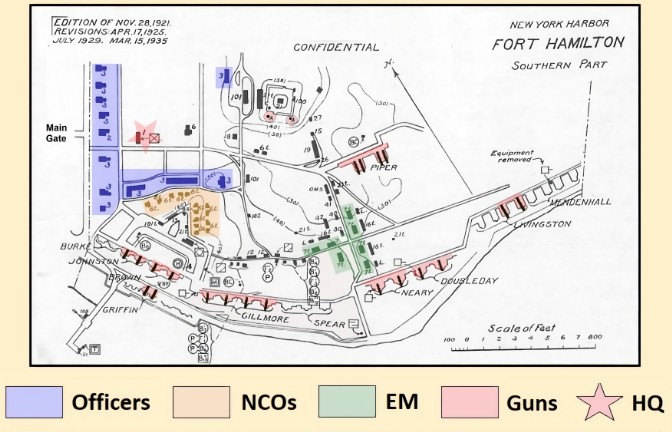
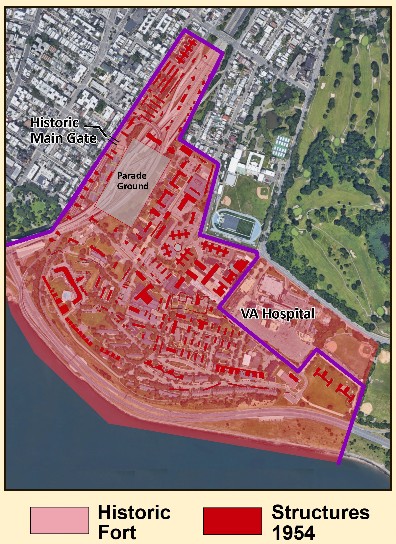
© 2022 Google, Bluesky, CNES/Airbus, Maxar Technologies, Sanborn.
* Fort Wadsworth, 1847
In the early-nineteenth century, the State of New York fortified the eastern shore of Staten Island across the Narrows from Fort Hamilton. The defensive works consisted of Forts Tompkins and Richmond plus five detached firing positions. In 1847, the War Department purchased the decaying facilities from New York. In 1890, major reconstruction of the fortifications began and the entire facility was named Fort Wadsworth. Until US entry into the First World War, the fort's garrison fluctuated between 100 and 300 soldiers.
In 1914, the fort was armed with 10 heavy guns, 6 medium guns, and 12 light guns. After the war, the Army greatly decreased the number of artillery units at the fort and by 1922, only 3 companies were stationed there. Those units were deactivated in 1924. In 1940, the Army activated an anti-aircraft battery at Fort Wadsworth and another such unit the following year. At the time of US entry into the Second World War, Fort Hamilton was armed with 10 heavy guns and 12 light guns. Like at Fort Hamilton, all guns were deactivated before the war ended.
During the Korean War, a mobilized National Guard anti-aircraft battery was at Fort Wadsworth and from 1952 through 1959, the 52nd Anti-Aircraft Artillery Brigade was headquartered there. During the Cold War, that unit's combat components were the anti-aircraft missile sites in the New York - Philadelphia air defense area. In 1972, the Army Chaplain School relocated to the fort from Fort Hamilton. In 1979, the Department of Defense transferred Fort Wadsworth to the Navy.
As a Navy facility, the fort was headquarters for Naval Station New York (all naval facilities in New York including the Brooklyn Navy Yard). In 1995, the Navy transferred most of Fort Wadsworth to the National Park Service. In 1996, the Coast Guard took over the remaining Federal property of the Fort Wadsworth site. An Army Reserve Center is also on that property.
Old Fort Richmond, 1903
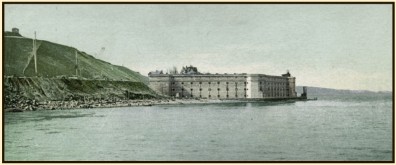
Postcard digitized by the New York Public Library.
Site Plan 1921
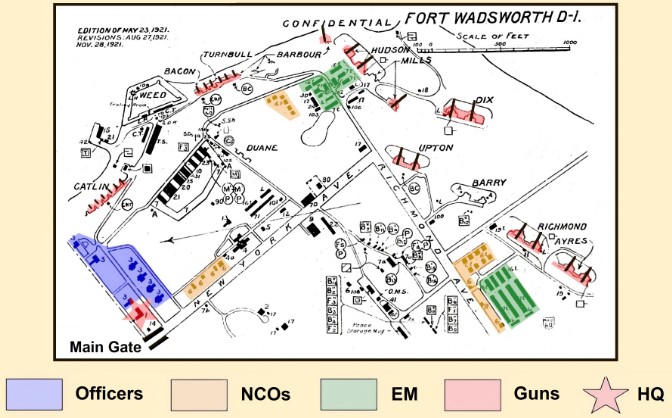

Photograph c. 1950 digitized by the National Archives.
The Narrows, 1947
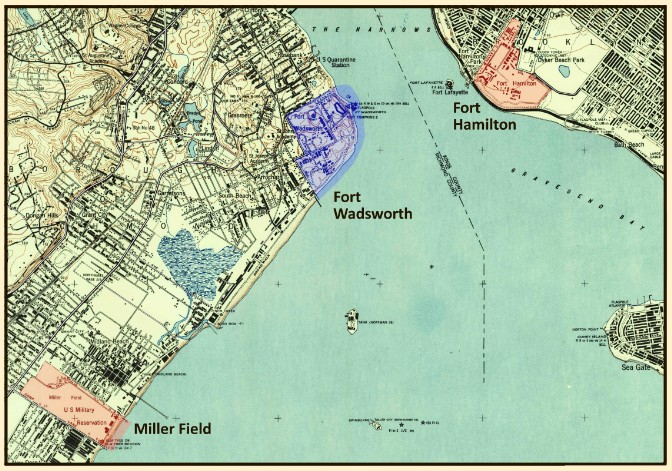
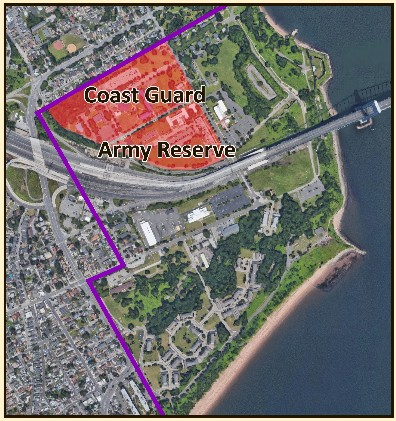
© 2022 Google, Bluesky, CNES/Airbus, Maxar Technologies, Sanborn.
* Fort Totten, 1862
The fort was built in 1862 to guard the eastern approach to New York City. At American entry into the First World War, Fort Totten was armed with 8 heavy guns, 8 siege mortars, and 6 light guns. During the war, the Army removed the heavy guns. After the war, the remaining firing batteries (siege mortars and 4 light guns) were in "caretaker" status. In the inter-war years, Fort Totten hosted an anti-aircraft regiment. At the outbreak of the Second World War, the Army reactivated the fort's light (3-inch) guns.
From 1954 to 1966, located here was HQ of the 1st Region, Army Air Defense Command (all SAM Sites in the Northeastern US). Fort Totten was primarily an Army Reserve Center though the USS Albert T. Harris, a Naval Reserve destroyer escort, was berthed there 1957-1968. Currently, the facility is mostly a park but it does contain an Army Reserve Center.
Gun Positions (The Water Battery) c. 1880.

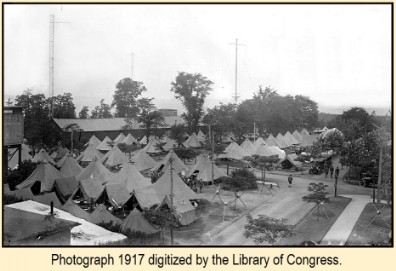
Soldiers living "under canvas" are probably National Guardsmen performing their two weeks of annual summer training.

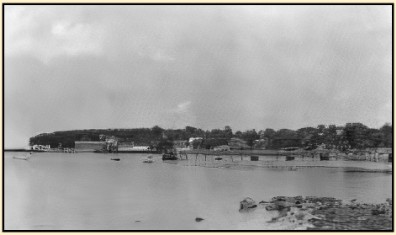
Photograph 1937 digitized by the New York Public Library.
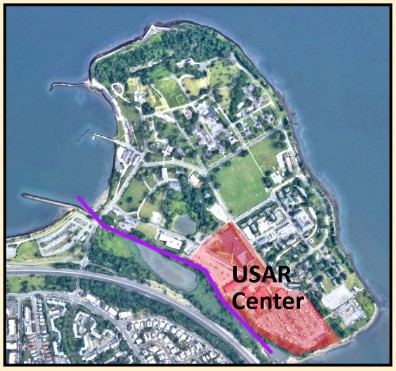
© 2022 Google, Bluesky, CNES/Airbus, Maxar Technologies, Sanborn.
Fort Tilden, 1917-1974
The War Department established Fort Tilden to complement Fort Hancock in defense of New York's Outer Harbor. During the Second World War, it was armed with 2 heavy guns (casemated) and 4 medium guns. In 1955, the Army installed there a Nike surface-to-air missile site (NY-49). In 1960, Regular Army combat units at Fort Tilden were HQ, A, and B Batteries, 3rd Missile Battalion/7th Artillery. The SAM site was deactivated in 1971. The fort was also an Army Reserve Center. Now it's a park.
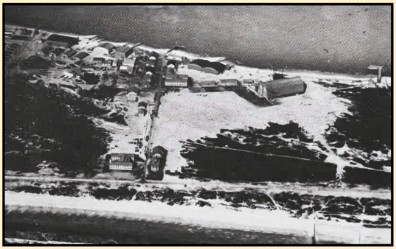
Fort and Naval Air Station, 1917.

Guns at Fort Tilden, 1920s.
Brooklyn Army Terminal, 1919-1966
This facility served as an embarkation point for both men and materiel sent to Europe from the First World War through the Cold War. Prior to routine air transport of service personnel, it was the primary terminal for service personnel leaving for, and returning from, Europe.

Photograph 1931 digitized by the New York State Library.
Private Elvis Presley
Ready to Board Ship In Brooklyn
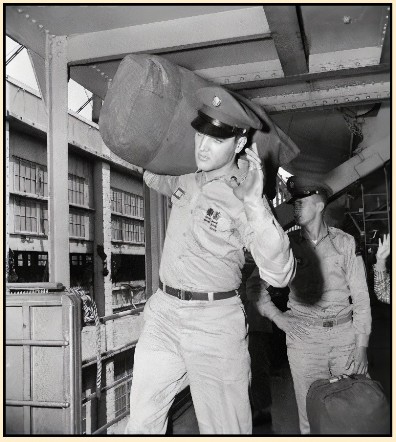
On September 22, 1958 Elvis Presley was at the Brooklyn Army Terminal to board the USS General Randall which would take him to Germany. There he would serve for 18 months with the Third Armored Division. When his tour of duty in Germany ended, he returned to the US by air, landing March 3, 1960 at McGuire AFB. From there he went to the adjacent Fort Dix where he remained for the last two days of his active duty service.
Miller Field, 1921-1969
Throughout most of its history, this facility served as a National Guard Armory or Army Reserve Center. An Army anti-aircraft gun battery was there 1943-1946, and a mobilized National Guard anti-aircraft battery, 1950-1952. From 1954 through 1969, a Nike missile maintenance facility was at Miller Field. It was operated by a civilian contractor and had few Regular Army personnel.
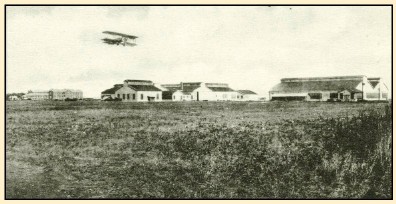
From postcard digitized by the New York Public Library.
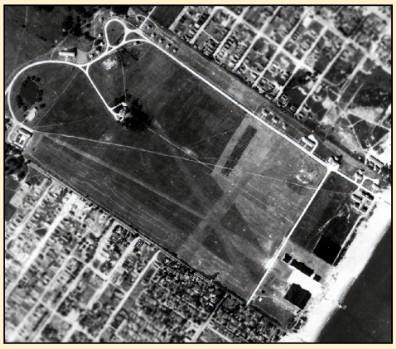
Photograph 1924 from the Historical Marker Database, www.hmdb.org.
Floyd Bennett Field, 1941
In 1941, this site of the former NYC Municipal Airport was acquired by the Navy for use as an air station. After World War II, it was a Naval Air Reserve Station, Air National Guard Base, and Coast Guard Station until 1971. A small part of the former Navy property is currently a Marine Corps Reserve Center.
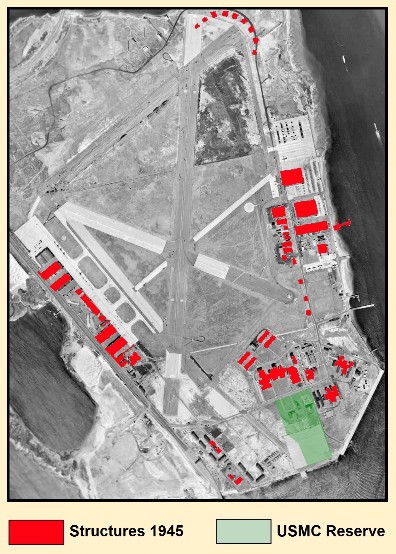
Photograph 1954, National Geodetic Survey.
Army Pictorial Service Center, 1942-1970
This facility was a Paramount motion picture studio when acquired by the Army in 1942. The APS Center was the Army's principal site for production of training and propaganda films and was a training facility for combat photographers.
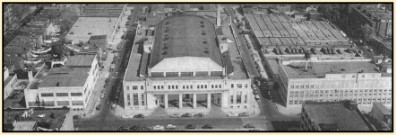
Photograph 1951 digitized by the National Archives.
Hart Island, 1954-1961
Located on this facility of the New York City Department of Corrections was Nike surface-to-air missile site NY-15. On the island were the launch pads operated by Battery C, 3rd Missile Battalion/7th Artillery. The photo below is from 1951, with the land selected for the launch site outlined in red. Note that the launch site was surrounded by New York City's Potters field.

Photograph 1951, NY State Archives.
Harbor Defense, 1789-1945
For 150 years, the regular army's uniformed presence in New York City was primarily through artillery units assigned to harbor fortifications. By Bloomsday, the Outer Harbor was protected by Fort Hancock (Sandy Hook, NJ), the Inner Harbor by Forts Wadsworth and Hamilton, and the eastern approach to the city from Long Island Sound by Forts Slocum, Schuyler, and Totten. From 1900 to 1915, about 3,500 artillerymen were stationed in the New York Metropolitan Area. During the First World War, the War Department built Fort Tilden on the Rockaway Peninsula to complement Fort Hancock in defense of the Outer Harbor. After the First World War, the government cut back expenditure on coastal defense. By 1930, all New York coastal artillery batteries were in "caretaker" status and only about 300 coastal artillerymen were in the Metropolitan Area.
The army usually stationed an infantry battalion at Fort Jay on Governors Island. From 1906 through the outbreak of the First World War, New York City's infantry garrison was provided in turn by the 12th, 8th, 29th, and 22nd Infantry Regiments. After that war, a battalion of the 22nd Infantry Regiment returned to Governors Island and in 1922 it was replaced with the entire 16th Infantry Regiment. That unit remained on the island until the US entered the Second World War.
The 16th "became known as 'New York's Own' and participated in all civic and military parades and celebrations in the metropolis, as well as supplying color guards and the services of the regimental band for countless veteran and patriotic events."
n/ Three Centuries Under Three Flags, 66.
In 1921, the army formed an anti-aircraft battalion at Fort Totten. The following year it was enlarged to become the 62nd Anti-Aircraft Regiment and its peacetime strength was about 700 men, all ranks. It was armed with 12 3-inch (76mm) anti-aircraft guns and 60 heavy machine-guns. The regiment provided air defense of New York City. At the outbreak of the Second World War, its components were dispersed throughout the city.
Note that during the inter-war years, nearly all operational Regular Army combat units (such as the infantry and anti-aircraft units in New York) were funded by Congress to be at about one-third of war-strength. There were also many non-operational units that consisted of cadres only (like the harbor defense artillery units in New York).
Army Combatants in New York City
Coastal Artillery | Anti-Aircraft Artillery | Infantry | Total | Per 100,000 Population | |
1900 | 3,500 | 500 | 4,000 | 116 | |
1920 | 3,000 | 500 | 3,500 | 62 | |
1925 | 900 | 700 | 1,000 | 2,600 | 44 |
1930 | 300 | 700 | 1,000 | 2,000 | 29 |
Numbers are approximate.
After the Japanese attack on Pearl Harbor in December 1941 and US entry into the Second World War, Congress wrote the armed forces a blank check and the nation's military expanded greatly. The War Department reactivated all harbor fortresses.
Shortly before the war's end, US defense planners concluded that harbors could best be defended against sea attack by aircraft and that large, coastal guns were obsolescent. By 1948, nearly all the coastal artillery was scrapped and in 1950, the Defense Department disestablished the Army Coastal Artillery Corps.
New York City and the Cold War
Combat troops returned to the city in the 1950s and like their predecessors in the coastal artillery, their mission was to defend New York against attack. This time; however, the anticipated threat was from the air and not the sea.
In about 1949, the US government determined that the Soviet Union would pose a bomber threat to North America. Accordingly, the US Army, the US Air Force, and the Canadian Armed Forces developed a large anti-aircraft defense capability that consisted of radar installations, surface-to-air missile sites, and fighter-interceptor squadrons. The Soviet Union never developed a credible inter-continental bomber force and beginning in 1965, substantial reductions began in the anti-bomber combat components of the bi-national North American Air Defense Command. By 1972, NORAD's anti-bomber force consisted of a single SAM site in South Florida, 2 US Air Force Squadrons in Alaska, 2 RCAF squadrons in Canada, and 14 Air National Guard squadrons in the Continental United States.
The Army's sole combat formation stationed in New York 1954-1971, was the 3rd Missile Battalion/7th Artillery. About 535 of its 650 uniformed personnel were posted in the city (one battery of 115 soldiers was in Harrison, Westchester Co). Also, as noted above, headquarters of the 1st Region Army Air Defense Command was at Fort Totten 1954-1966.
Surface-to-Air Missiles in US Cities
There were two SAM systems in North America, the Nike short-range system and Boeing Michigan Aeronautical Research Center (BOMARC) long-range system.
The first Nike missile was labeled "Ajax" and had a range of 25 miles and maximum speed of Mach 2.1. It was armed with a conventional fragmentation, airburst warhead. The upgraded Nike "Hercules," had a range of 90 miles, maximum speed of Mach 3.5, and was armed with a 3, 10, or 20 kiloton atomic warhead. Hercules missiles were delivered to launch sites beginning in 1959. Nike's were operated by the US Army's Air Defense Command.
The first BOMARC missiles had a range of 230 miles, maximum speed of Mach 3.9, and were armed with a 10-kiloton atomic warhead. BOMARCs were operated by the Air Force. The upgraded version had a range of 440 miles. BOMARCs were deployed at 8 Air Force Bases in the northeast 1959-1972. The Royal Canadian Air Force had BOMARC sites at North Bay, Ontario and La Macaza, Quebec which were operational 1962-1972.
SAM Air Defense of New York City
The Department of the Army assigned three missile battalions to the defense of New York City; the National Guard Bureau three battalions. The Army National Guard battalions were two from New York and one from New Jersey and were supervised by the Army's 19th Artillery Group, the formation charged with air defense of New York City. National Guard air defense artillery units could provide round-the-clock staffing of Nike sites as about 40% of their members served full-time.
Short range protection of New York City against non-existent Soviet bombers was provided by a network of 10 Nike sites in New York and 9 Nike sites in New Jersey. Two sites were located within the city limits. One was NY-49 at Fort Tilden on the Rockaway Peninsula, Queens the other NY-15 on Hart Island, The Bronx. The Fort Tilden site was operational 1955-1971; Hart Island 1955-1960.

National Geodetic Survey, 1955. Photograph © 1960 digitized by the National Park Service.
Transcript of Rich Lowery interview. Lowery served 1959-1961 as a US Army radar operator at SAM Site NY-15. That site was unusual in that the Missile Launch Area was on Hart Island while the Battery Control Area was on Davids Island, 1.5 miles due north.
Long-range SAM coverage of New York City, much of Upstate New York, and most of New England was provided by the Air Force's BOMARC site at Suffolk County AFB, Westhampton. The SAM site, active 1959-1964, was operated by the 6th Air Defense Missile Squadron.
The Dublin Garrison That Could Have Been
After the 1801 union of Ireland and Great Britain, successive governments were doubtful of Irish loyalty to the United Kingdom. Accordingly, a large military presence was maintained in Ireland and the City of Dublin. That 4,000 to 4,500 combat troops garrisoned Dublin was the result of an irrational fear that at any moment Dublin's citizens might seize control of the city. Had governments been less concerned over Irish loyalty, Dublin's garrison would have been much smaller and at the start of the twentieth century, would have resembled that of New York City's .
The only combat troops needed in the city were those of a single regiment of cavalry who would perform ceremonial military duties. Those soldiers would have also served as the Viceroy's bodyguard and mounted escort. That regiment's band would play the same role as did the band of the US 16th Infantry in New York.
With a minimal combat element present in Dublin, the city's garrison in 1904 would have been 800 uniformed personnel of the regular forces and 80 to 100 soldiers of the local militia units' permanent staffs, not the 5,400 present in Dublin on June 16, 1904. The Regular Army in Dublin would have accounted for 210 persons per 100,000 inhabitants instead of 1,213. This much smaller presence would not have caused the resentment of Dublin's population as exhibited by Bloom in Ulysses.
n/ War Office, Monthly Army List, July 1904; "Maud Gonne's letter about taking them off O'Connell street at night: disgrace to our Irish capital." Ulysses (Gabler) 5:70-71.
Hypothetical Reduced Army in Dublin
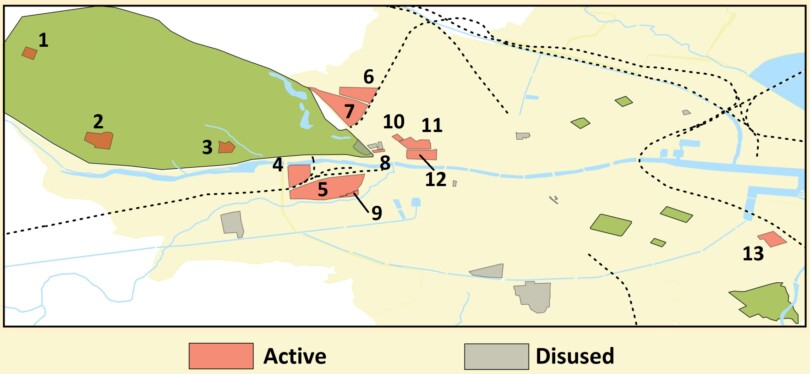
| 1 | Mountjoy Barracks | Ordnance Survey Office and 14th Engineer Coy. |
| 2 | Royal Hibernian Military School | Army boarding school for sons of soldiers. |
| 3 | Magazine Fort | Munitions stores for Irish Command. |
| 4 | Island Bridge Barracks | Remount Depot (ASC Coy B). |
| 5 | Royal Kilmainham Hospital | Nursing home for disabled veterans. |
| 6 | Cavalry Exercise Grounds | |
7 | Marlborough Barracks | 1 squadron and band of a cavalry regiment at Curragh Camp; Dublin HQ. |
| 8 | Ordnance Stores | Stores for Irish Command. |
| 9 | Irish Command HQ | |
| 10 | Military Hospital | |
11 | Arbour Hill Complex | Family housing, detention centre, ASC stores, and garrison church. |
12 | Royal Barracks | 42rd, 61st, 64th, 66th ASC Coys; 14th Medical Coy; District Recruiting HQ and Recruit Reception Center. |
13 | Beggarsbush Barracks | Depot for militia and imperial yeomanry. |
Note that without the combat troops, the Regular Army in Dublin would have been confined to the northwestern part of the city in and around Phoenix Park. The large barracks of Richmond and Portobello and medium-sized Wellington and Linen Hall, would have been vacant. Beggarsbush Barracks in Pembroke would have remained as the Dublin area's militia and imperial yeomanry depot.
Links to Other Websites
Click on the link and the dpage on other websites will open in a new browser window. Click on the icon for the website's home page.
The Army's Century on Davids Island, on the website of the Westchester County Virtual Archives. The website is a collaborative effort of the Westchester County Archives and the Westchester County Historical Society.
Page on the website of the 16th Infantry Regiment Association that covers the 16th's stay in New York City, 1922-1941.
Compilation by Michael J. Stenzel of all New York forts, camps, bases etc., past and present. This directory page is on the website of the New York State Military Museum and Veterans Research Center.
Page on the National Park Service's website for the Gateway National Recreation Area.
Sources
3rd Coast Guard District. Three Centuries Under Three Flags. New York: US Coast Guard, 1978.
Bearss, Edwin. Historic Resource Study - Fort Hancock: 1948-1975. Denver: National Park Service, 1982.
Black, Frederick R. A History of Fort Wadsworth. Boston: National Park Service, 1983.
Center of Military History. History of Strategic Air and Ballistic Missile Defense, Pub 40-5-1 Paper 2009. Washington, DC: US Army, 1975.
Clay, Steven E. U.S. Army Order of Battle 1919-1941, Vol. 2. Fort Leavenworth: Combat Studies Institute, 2010.
Gaines, William C. "Coast Artillery Organizational History, 1917-1950, Part 1," The Coast Defense Journal 23, no. 2 (May 2009): 4-51.
Hauptman, Laurence M. "Can-Do Shipyard," New York Archives (Winter 2020): 20-27.
Osato, Timothy. Militia Missilemen, ARADCOM Historical Monograph ARAD 3 M. Colorado Springs: US Army, 1968.
Annual Report of the Chief of Coast Artillery, 1924.
New York State Military Museum and Veterans Research Center website at museum.dmna.ny.gov.
[ You are at www.majortweedy.com>British Army>Dublin>Armed Forces NYC ]
